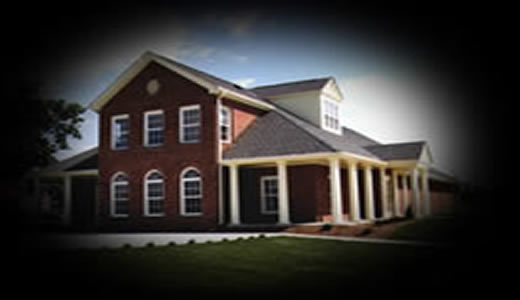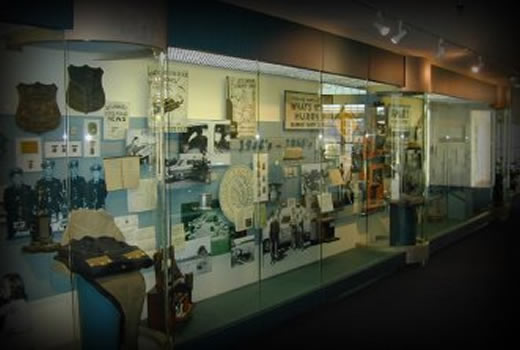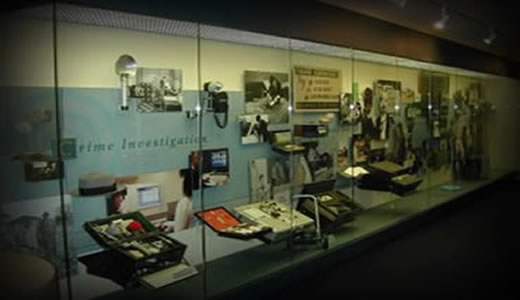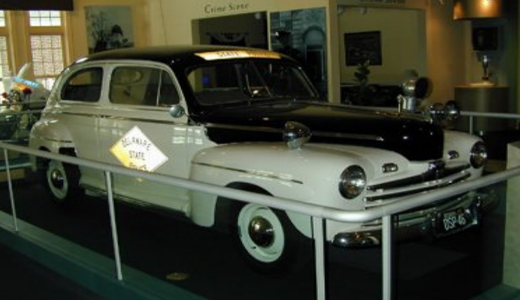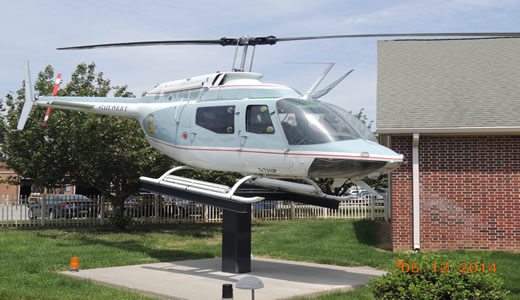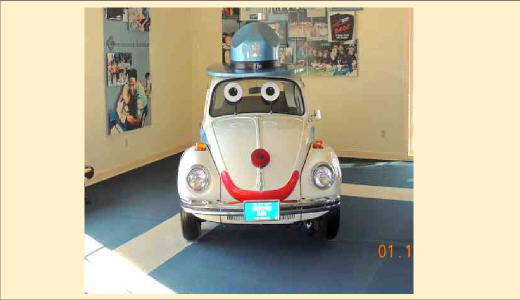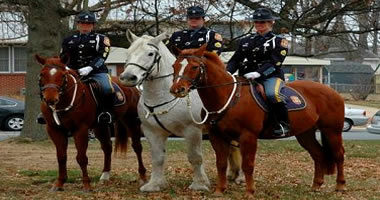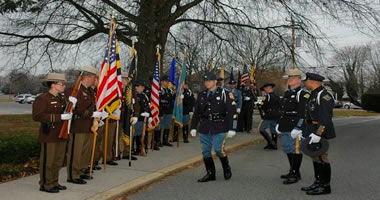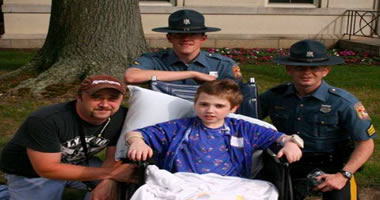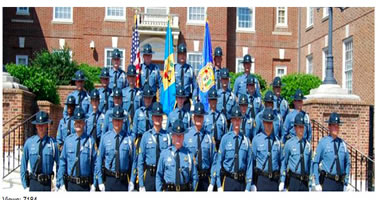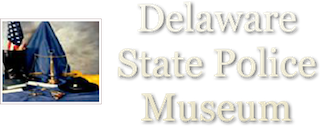History of the Delaware State Police - 1945-1949
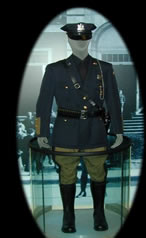

The uniform was later changed again in August of 1947, when acting Superintendent Barnes replaced the Stetson hat with a light blue eight-pointed cap with short brim. The new hat was considered more practical for everyday police work. The Stetson hats were still worn on special occasions.
The State Highway Commission approved a new promotional system in 1945. The rank structure and annual salaries were as follows:
- Recruit Trooper……………………. $ 1,860.00 - $2,070.00
- Trooper…………………………….. $ 2,359.00
- Trooper 1st Class…………………… $ 2,460.00
- Detective (2 yr.)…………………… $ 2,580.00
- Corporal…………………………… $ 2,580.00
- Sergeant …………………………… $ 2,880.00
- Lieutenant …………………………. $ 3,180.00
- Captain …………………………….. $ 3,540.00
- Colonel …………………………….. $ 6,000.00
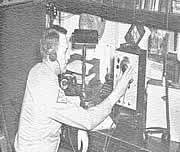 In December of 1945, a proposal was made to expand the state police two way radio system. A feasibility study was conducted by the State highway Commission, the results of which indicated that with certain improvements a 24-hour statewide two-way radio system including all emergency agencies could be established. In 1945, a standardized system of coding radio messages was developed. This system was a precursor to the "10-code" currently in use.
In December of 1945, a proposal was made to expand the state police two way radio system. A feasibility study was conducted by the State highway Commission, the results of which indicated that with certain improvements a 24-hour statewide two-way radio system including all emergency agencies could be established. In 1945, a standardized system of coding radio messages was developed. This system was a precursor to the "10-code" currently in use.
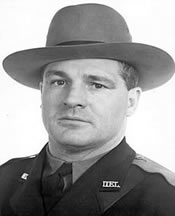
![]()
On October 16, 1945, Trooper First Class Paul H. Sherman, a six-year veteran of the force, was killed when his patrol car collided with a B&O Railroad passenger train on Newport Gap Road. Trooper Sherman was pulled from the wreckage by New Castle County Police and transported to Wilmington General Hospital where he died from injuries sustained in the collision. Trooper Sherman was laid to rest at Gracelawn Memorial Park, New Castle, Delaware.
In an attempt to provide standardized training to all law enforcement agencies throughout the state, the first municipal training school was held 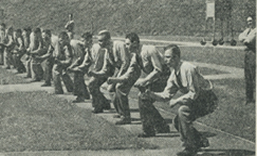 in Dover, on February 19, 1945. The school was conducted by the Delaware State Police in cooperation with the Wilmington Police Bureau and the FBI. Instructors at the school were
in Dover, on February 19, 1945. The school was conducted by the Delaware State Police in cooperation with the Wilmington Police Bureau and the FBI. Instructors at the school were 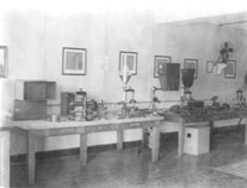 trained by the Northwestern University Traffic Institute and the FBI National Academy. Eleven municipal officers graduated from the two week training program which offered courses in criminal and accident investigation, report writing, laws of arrest, courtroom demeanor, defensive tactics and a variety of other subjects designed to enhance the professionalism of municipal police officers throughout Delaware. In 1945, the troop designators were changed from numerical to letter designators.
trained by the Northwestern University Traffic Institute and the FBI National Academy. Eleven municipal officers graduated from the two week training program which offered courses in criminal and accident investigation, report writing, laws of arrest, courtroom demeanor, defensive tactics and a variety of other subjects designed to enhance the professionalism of municipal police officers throughout Delaware. In 1945, the troop designators were changed from numerical to letter designators.
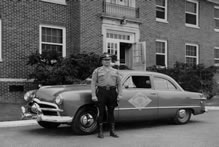 The Bridgeville and Penny Hill Troops were closed due to manpower shortages brought about by the war, and a single troop serviced the residents of each county. The troop boundaries were also realigned so each troop served only residents within the county in which the troop was located. Men who were formerly assigned to station duty were assigned to patrol duties in an attempt to offset the hardships incurred by the department as a result of the wartime deployment of many of its active members.
The Bridgeville and Penny Hill Troops were closed due to manpower shortages brought about by the war, and a single troop serviced the residents of each county. The troop boundaries were also realigned so each troop served only residents within the county in which the troop was located. Men who were formerly assigned to station duty were assigned to patrol duties in an attempt to offset the hardships incurred by the department as a result of the wartime deployment of many of its active members.
After the war, Superintendent Haviland, refused to restore the Penny Hill and Bridgeville barracks to full service despite the continued protestations of local residents and politicians. The ensuing political pressure resulted in the Superintendent’s forced resignation and the reopening of the troops in 1947. The troops then reverted to their former numeric designators and Major Herbert Barnes was named the new acting superintendent.

The Retired Association of Delaware State Police was formed in April of 1946. This was the first time retired members had been provided a forum through which they could maintain regular social contact with other retired and active members of the department. The association is still active today with approximately 280 members who meet on a quarterly basis.
In an attempt to improve the department’s ability to respond to calls for service in 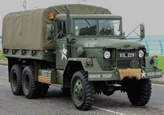 emergency conditions and in areas impassable by conventional vehicles, in 1946, a ten-wheel 2 1/2 ton 6x6 GMC truck was purchased from government surplus. Members of the department reconstructed the armored vehicle for use as an Emergency Field Operations Unit and it was equipped with a variety of implements designed for use in emergency situations.
emergency conditions and in areas impassable by conventional vehicles, in 1946, a ten-wheel 2 1/2 ton 6x6 GMC truck was purchased from government surplus. Members of the department reconstructed the armored vehicle for use as an Emergency Field Operations Unit and it was equipped with a variety of implements designed for use in emergency situations.
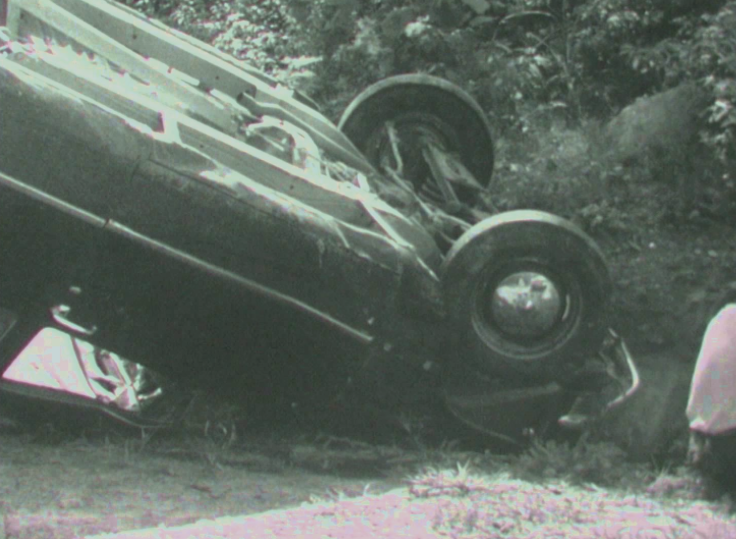 On February 20, 1946, in-service training programs resumed after the war with a 10-week course of instruction held at Legislative Hall in Dover. All members of the Division were required to attend one two-week session. Course topics included: investigating the hit and run accident, evidence at the accident scene, traffic reports, pedestrian laws and their enforcement, the traffic officer and his relation with the public, and public speaking.
On February 20, 1946, in-service training programs resumed after the war with a 10-week course of instruction held at Legislative Hall in Dover. All members of the Division were required to attend one two-week session. Course topics included: investigating the hit and run accident, evidence at the accident scene, traffic reports, pedestrian laws and their enforcement, the traffic officer and his relation with the public, and public speaking.
In 1947, House Bill 219 provided for a manpower increase which expanded the state police to 120 members. The new complement increase would prove necessary to the reopening of the Bridgeville and Penny Hill stations, allowing all state police facilities to once again operate on a 24 hour basis.
In 1947, the trend toward increasing specialization continued as special accident squads were formed at each troop. The two man units were assigned white patrol cars equipped with flares and first aid kits. They responded to and investigated all motor vehicle accidents and could perhaps be considered the  precursor to the accident reconstruction teams which we have today.The Charting and Drawing Division was created in 1946, with Cpl. John F. Herbert Jr., a former professional artist, appointed as its director. The primary function of this unit was to create cartoon type posters designed to educate and direct the public’s attention to issues of highway safety. The unit also prepared detailed sketches of accident and crime scenes and designed visual aids for the training division.A new sound recording device was purchased for use in the criminal division in 1945. The device recorded sound on film and could be used to record conversations in a room or over the telephone or radio.
precursor to the accident reconstruction teams which we have today.The Charting and Drawing Division was created in 1946, with Cpl. John F. Herbert Jr., a former professional artist, appointed as its director. The primary function of this unit was to create cartoon type posters designed to educate and direct the public’s attention to issues of highway safety. The unit also prepared detailed sketches of accident and crime scenes and designed visual aids for the training division.A new sound recording device was purchased for use in the criminal division in 1945. The device recorded sound on film and could be used to record conversations in a room or over the telephone or radio.
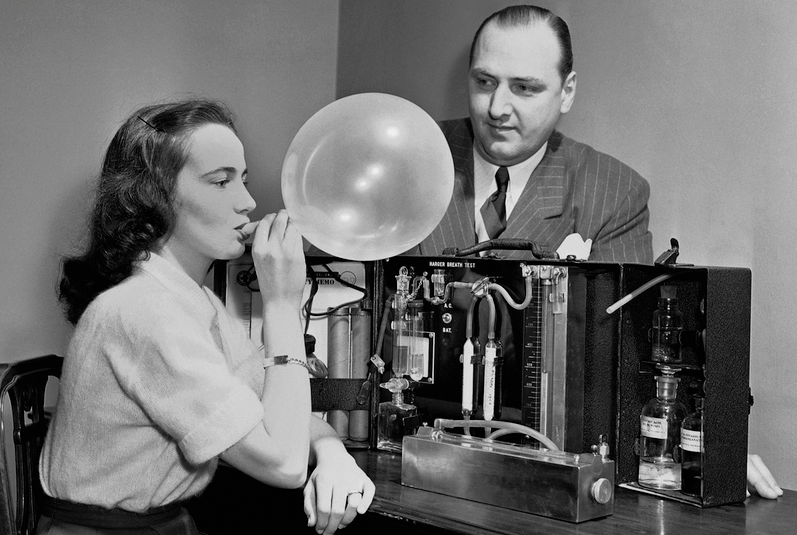 In 1948, each member of the department received eight hours instruction in the use of the Intoximeter, a chemical test used to analyze the blood alcohol concentration (BAC) of a breath sample. The course was instructed by Dr. Glenn Forrester who developed the device. This was the first scientific test which could be used by troopers in the field to determine the sobriety of drivers.
In 1948, each member of the department received eight hours instruction in the use of the Intoximeter, a chemical test used to analyze the blood alcohol concentration (BAC) of a breath sample. The course was instructed by Dr. Glenn Forrester who developed the device. This was the first scientific test which could be used by troopers in the field to determine the sobriety of drivers.
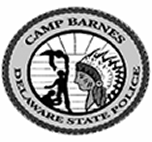
Later that same year, the Delaware Association of Chiefs of Police leased a 12-acre parcel of land adjoining Little Assowoman Bay on which a youth summer camp was constructed. Major Barnes was named as the chairman and was selected to manage the new camp which would eventually be named in his honor.
The decade came to a close with a complement of 120 men, 12 of whom were assigned to headquarters, 20 at Troop 1, 33 at Troop 2, 19 at Troop 3, and 18 men each at Troops 4 and 5. The growth which the department had experienced during the decade would continue into the 1950’s as the country enjoyed a period of prosperity. New programs would be developed to serve the community and important technological advances would be made which would prove beneficial for years to come.
